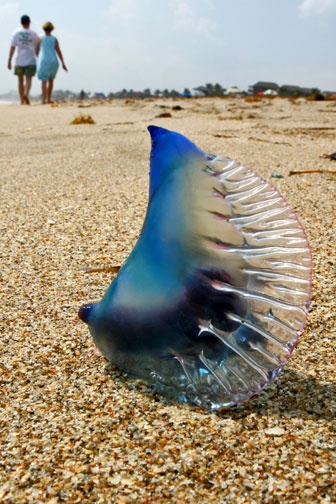Description
Often mistaken for a jellyfish, Physalia physalis, or Portuguese Man of War, is actually a floating colony made up of four different polyp types: the pneumatophore or float, the dactylozooids (tentacles used for capturing prey and defense), the gastrozooids (used for feeding), and the gonozooids (used for reproduction). The man of war is characterized by its conspicuous, bluish pneumatophore or float. This gas filled float is an overgrown polyp and floats on the surface of the water. The gas composition inside the float of most siphonophorans is most often quite similar to that of the air. However, in Physalia, there is a higher concentration of carbon monoxide. The tentacles of the man of war are blue to purple in color and may reach up to 50 meters in length. These tentacles contain numerous nematocysts, a defining characteristic of the phylum Cnidaria. Physalia have two different sizes of nematocysts (small and large) which play an integral part in stunning and killing prey.
